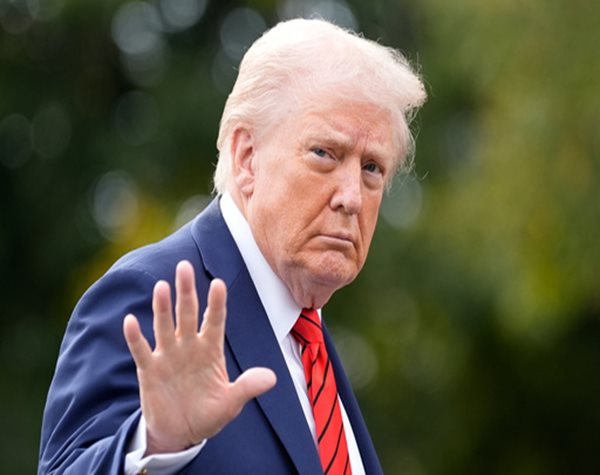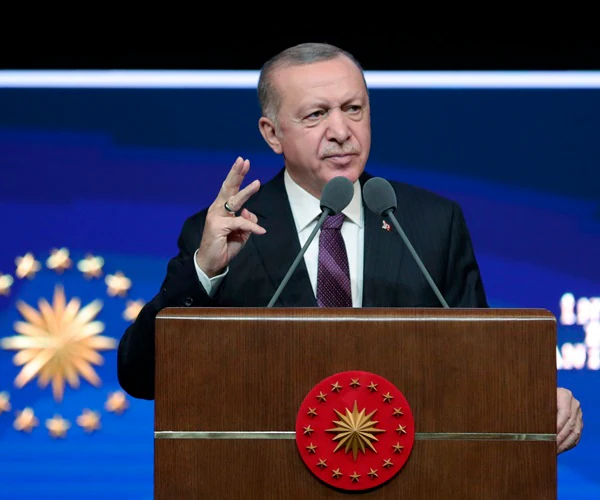President Donald J. Trump isn’t one to sit back when history’s being made — especially when he’s the one making it. On Sunday, the president departed for Israel and Egypt to celebrate the U.S.-brokered ceasefire between Israel and Hamas — a deal already being called one of the most significant diplomatic breakthroughs in modern Middle Eastern history.
The agreement, which has begun its first phase, is designed to bring a permanent end to the war triggered by the brutal Hamas attack on Israel on October 7, 2023. And who’s at the center of it all? The same man the global establishment swore would “ignite chaos” — instead, he’s delivering peace.
“Very excited about this moment in time,” Trump told reporters before boarding Air Force One. “Everybody’s amazed and thrilled, and we’re going to have an amazing time.” You can almost feel the media struggling to process a confident, optimistic American president flying into a war zone after ending the war.
A Moment of Opportunity in the Middle East
Trump believes this is a rare, narrow window to reshape the Middle East — a region long written off as “unfixable” by career diplomats. His administration’s unwavering support of Israel’s fight against Iranian-backed terror groups — Hamas in Gaza, Hezbollah in Lebanon — has created new conditions for peace. In Trump’s words, “Gaza is going to be rebuilt,” and he’s right — there are plenty of wealthy Arab nations ready to make it happen. “It would take a small fraction of their wealth to do that. And I think they want to do it.”
Even the White House — now buzzing with activity — admits that momentum is building. Arab and Muslim nations are shifting focus toward resolving the broader Israeli-Palestinian conflict and, in many cases, strengthening ties with the United States. Imagine that — America leading again, and people actually following.
What the Deal Includes
Phase one of the ceasefire calls for Hamas to release the final 48 hostages — about 20 of whom are believed to be alive — in exchange for Israel releasing hundreds of Palestinian prisoners. Humanitarian aid is also pouring into Gaza, and Israeli forces are pulling back from key urban centers.
Trump’s visit comes at a crucial moment: Israeli troops just began their withdrawal, triggering a 72-hour countdown for Hamas to release the remaining hostages — potentially while Trump himself is on the ground. Vice President JD Vance said on Face the Nation that the president plans to meet freed hostages in person and address the Knesset — the first U.S. president to do so since George W. Bush in 2008.
“Knock on wood,” Vance said confidently, “but we feel very confident the hostages will be released, and this president is actually traveling to the Middle East … to greet them in person.”
A Regional Push for Stability
After Israel, Trump will head to Egypt to meet with President Abdel-Fattah el-Sissi at a peace summit in Sharm el-Sheikh. More than 20 nations are expected to attend. The goal? Turn this fragile ceasefire into a lasting peace — one that finally brings stability to Gaza and the wider region.
Of course, there are challenges. Hamas disarming? Not likely. Even H.R. McMaster, Trump’s former national security adviser, admitted it’s “close to zero.” But let’s not forget — that’s what they said about peace itself, and look where we are now.
Israel’s Prime Minister Benjamin Netanyahu made his stance clear: Hamas only agreed to this deal “when the sword was on its neck — and it is still on its neck.” And let’s be honest — that sword was placed there because of Trump’s pressure and Israel’s resolve.
Rebuilding Gaza and Restoring Order
Much of Gaza is in ruins, with nearly two million people struggling in dire conditions. But under the Trump plan, Israel will reopen five border crossings to allow food, fuel, and supplies to enter. To ensure aid gets where it’s supposed to go, Trump has established a U.S.-led civil-military coordination center in Israel — a joint effort with partner nations and NGOs to monitor aid, logistics, and security.
Roughly 200 U.S. troops — already stationed in the region — will help oversee the process. No “boots on the ground” in Gaza, no open-ended commitment — just accountability and smart coordination.
The Bigger Vision: The Trump Doctrine in Action
The ceasefire deal also revives one of Trump’s signature diplomatic achievements: the Abraham Accords. Those agreements — which normalized relations between Israel and the UAE, Bahrain, and Morocco — were once called impossible. Now, Trump’s looking to go even further: a peace pact involving Saudi Arabia and Indonesia.
A deal with Saudi Arabia — the region’s heavyweight — could fundamentally reshape the Middle East, cement Israel’s place as a regional partner, and ensure America stays at the top of the global stage. Ambitious? Yes. Impossible? Not for Trump.
As usual, the critics will scoff. They always do. But the facts are clear: under Trump’s leadership, Israel is safer, Arab nations are cooperating, and even old rivals are shaking hands instead of launching rockets.
Peace through strength — it’s not just a slogan. It’s working. And as Air Force One heads toward the Middle East, the world’s watching one man who’s done what generations of politicians only promised: he made peace happen.


